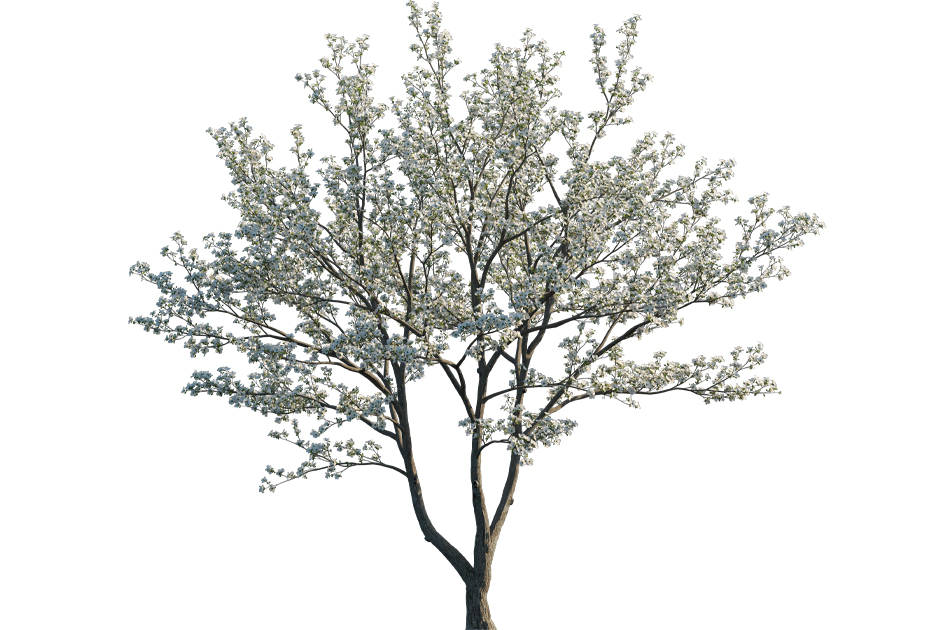Here’s to the land of the long leaf pine,
The summer land where the sun doth shine,
Where the weak grow strong and the strong grow great,
Here’s to “Down Home,” the Old North State!
~ A toast adopted by the North Carolina General Assembly in 1957.
The flowering dogwood is the official state flower of North Carolina. The early spring bloom of the dogwood tree was designated as the state flower in 1941. The state tree of North Carolina is the pine which was designated as such in 1963.
Dogwood trees are native to North Carolina and grow best in the filtered light of larger hardwood or pine trees.
There are many species of dogwood trees, including the Cornelian cherry, which has yellow blooms and edible sour-cherry-type fruit, and the Kousa dogwood, which has yellowish-green flowers in spring and pinkish-red berries in summer.
More Fun Facts about North Carolina:
Nickname: The Tar Heel State
Statehood: 1789; 12th State
Population: 10.8 Million
Capital: Raleigh
Biggest City: Charlotte
State Bird: Cardinal
History
The earliest people to live in what is now North Carolina were hunters and gatherers at least 10,000 years ago. Over the years, many Native American tribes called the area home, including the Cherokee, Woodland and Mississippian tribes.
Europeans first came to North Carolina in the 1500s, and it became the 12th colony in 1789, just after America declared its independence from Great Britain. North Carolina seceded from the country on May 20, 1861. It was one of 11 states that made up the Confederate States of America, fighting against the Union during the Civil War.
Why’s It Called The “Tar Heel” State?
North Carolina got its nickname, the Tar Heel State, because workers here used to sell tar, pitch and turpentine from the state’s longleaf pine trees to be used in wooden ships. Also, legend has it that some British soldiers were slowed down when they stepped in sticky North Carolina tar during the Revolutionary War.
Geography And Landforms
North Carolina is south of Virginia, east of Tennessee, north of South Carolina and west of the Atlantic Ocean. Traveling across North Carolina, visitors can see three unique regions defined by three different landscapes.
The Appalachian Mountains, the largest mountain range in the eastern United States, cover the state’s western region with some peaks rising more than a mile above sea level!
Journey to the middle of the state to find the Piedmont region. High and flat, this plateau sits between the mountain and coastal plain regions.
Just a few hours further east and you’re at the beach! The eastern region is called the coastal plain, and its mostly flat land leads to the Atlantic Ocean. Beaches, swamps and longleaf pines make up the landscape here.
North Carolina’s diverse regions are home to mammals like black bears, coyotes and raccoons; reptiles like sea turtles; amphibians like salamanders; and birds like ospreys and cardinals (the state bird). The state boasts 300 species of trees – including longleaf pine, shortleaf pine and the American chestnut tree. Plus, nearly 3,000 types of flowering plants – including the flowering dogwood, the state flower.
More Fun Stuff
Famous pirate Blackbeard called North Carolina home and spent time looting ships off the coast in the early 1700s. In 1799, a shiny nugget was found in Little Meadow Creek, North Carolina and became the first gold discovered in what is now the United States.
Orville and Wilbur Wright were the first to achieve powered flight with their Wright Flyer in Kitty Hawk, North Carolina on December 17, 1903. The brothers had been building and experimenting with gliders since 1899, and their innovations in design and engineering led them to success. The Wright Flyer was a revolutionary aircraft, and the brothers’ achievement made them world famous. They continued to develop their flying machines, and their work paved the way for the modern aviation industry.
Tobacco has been a staple crop in North Carolina since the beginning of the state’s roots. It was so important to the colonists that they even used it as money. Durham’s revitalized American Tobacco Campus (formerly the Lucky Strike cigarette plant) is a must-see tobacco history highlight.
Plenty of famous folks were born in North Carolina, too, including jazz pianist Thelonious Monk, President James K. Polk, and maybe President Andrew Jackson (he was born on the border of North and South Carolina).
You might want to visit the Outer Banks, a group of islands with beaches, state parks and shipwreck-diving sites. One of those islands, Roanoke Island, was home to the first colony of English settlers in the New World. In the late 1500s, the settlers disappeared, and historians are still trying to solve the mystery of the Lost Colony.



















